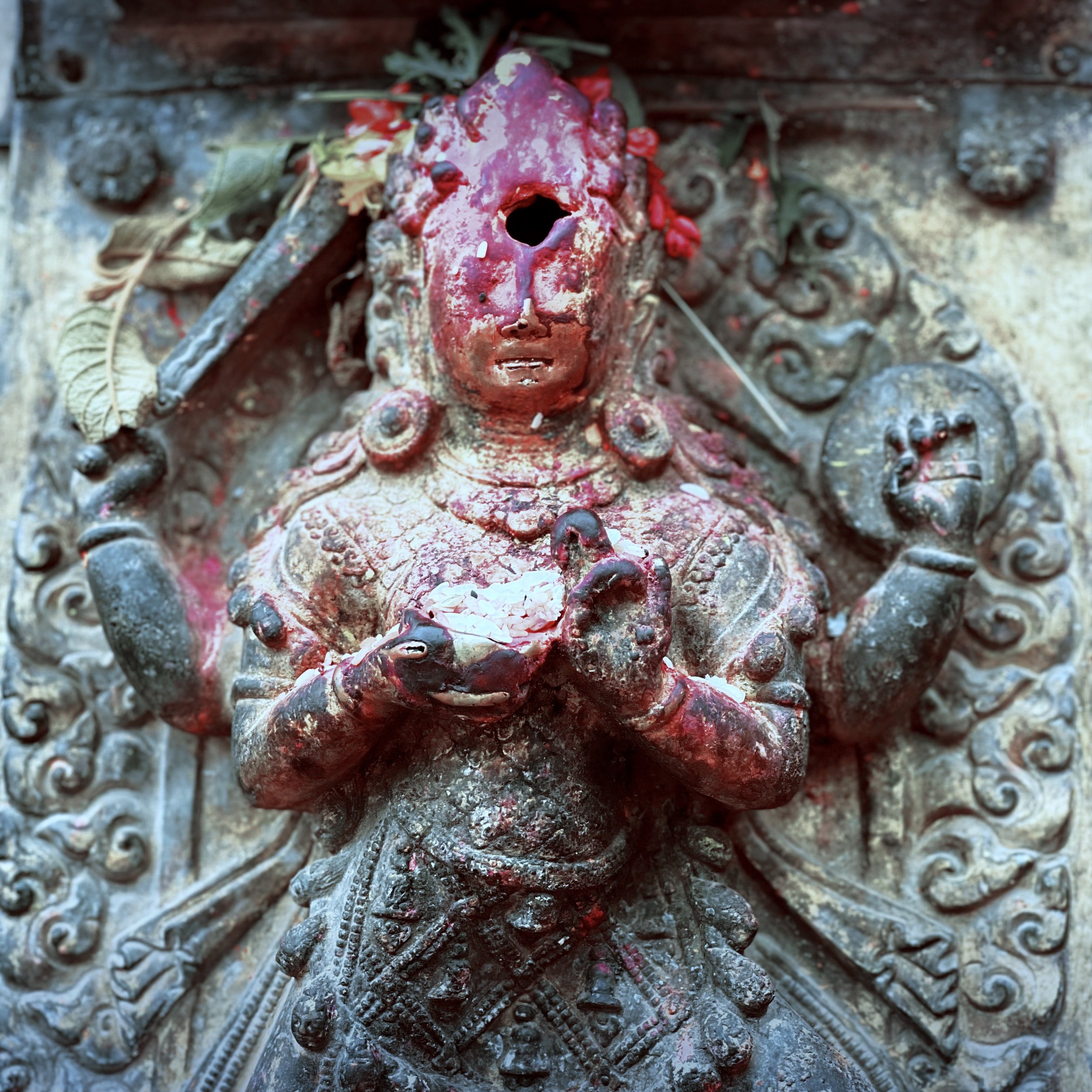Ordeals and Initiations
Every initiation requires an ordeal, Harper Feist and I had reflected during her recent visit to Munich. My own visit to Nepal followed shortly thereafter, opening up the meaning of the preceding sentence in a whole new dimension.
During our 12 days in Nepal, spent with a motley crew of extraordinarily wonderful and diverse characters, we had the great privilege of making encounters that I had no idea were even possible. I owe all this to Prema Goet and Ferdia Genc, who conceived, facilitated, and fully realized this dreamlike adventure. It took us to the Pashupatinath temple district, where, high above the river where the dead are cremated, we participated in aghori rituals and discussed with their gurus, to the elaborate labyrinth of temples and shrines in Kathmandu and Bhaktapur, to the bloody Dakshinkali temple complex and the cave where Padmasambhava attained enlightenment. The highlight of this adventure, however, was our journey to the remote temple of Muktinath, with its 108 springs, known as one of the most potent places of healing in the world. At the foot of its mountain, we searched for the mysterious shaligrams – fossilized ammonites thought to be the living body of Vishnu. We were allowed to speak with the wild, black Kali Gandaki river, stood in the deafening call of its majestic waterfalls, and exposed ourselves to the ordeals and dangers of its steep gorges and countless mud- and landslides.
Every initiation requires an ordeal, I hear Harper and I still reflecting from the safety of our restaurant table, shaded by tall chestnut trees. How little did I know then how true this sentence would turn out to be, and how bittersweet it tastes on the tongue of lived experience. On the drive from Beni to Marpha, there came a point where I could no longer observe my fear but found myself completely within it. The abyss that our jeep had been scraping along for hours was simply too deep and too steep to be perceived as a game. The driver’s anxious gaze up the steep mountainside - always ready to slam on the brakes as more rocks and debris hit the narrow path - was too serious and real to call it an adventure. Fear becomes a companion, when you exit from the safety of the jeep and stand in front of one of those huge avalanches that have broken off and sunk half a mountain in front of you: Swallowing the road for thirty meters with black earth and debris, sending new mud-soaked waterfalls shooting out of its open chest, and laughing with a deep rumble at the arrogance and naivety of the travelers who presumed to cross its path. Fear is a monkey on your back when under such circumstances you have to abandon your jeep and climb for hours over mudslides and rope bridges, in pouring monsoon rain, dressed in a plastic bag, always surrounded by the thunderous roar of the Kali Gandaki deep down in the gorge.
What I learned on that day, beyond the change of lived experience it infused in my body, were mainly two things: 1. An entire travel group can actually be calm and focused while being accompanied by life-threatening fear. Drama is a lure and an easy instinct, but it is as much a poison as surrendering to fear itself. 2. The ordeal that has to accompany any initiation, can actually occur subsequent to initiation. In this case, we had just received immensely powerful blessings from the waters in Muktinath, and now this walk through the abyss followed right on its heels. A price must be paid, a debt must be settled, and any asymmetry must be balanced. It doesn’t matter whether we give or receive first; we need to partake in both experiences for any genuine change to become flesh.
The other formative experience of this trip was the many conversations with people who are deeply familiar with the different currents of Hindu and Buddhist Tantrism. What a wonderful feeling to find oneself in the role of the naïve child again: To experience counterparts who magnanimously allow even the simplest questions, and answer them in a complexity that often far exceeded my capacity to follow. I heard answers from gurus, from academics, from practitioners, and sometimes from all three at once. It became particularly exciting when ‘the experts’ disagreed, or at least preferred different explanations. It was especially in these discussions that I gained valuable insights into the thicket of seeming orthodoxy and orthopraxy of the different devotional cultures, cults, and currents. Fair to say, that literally nothing we know from Western spiritual traditions comes close to the meandering, organic complexity of these systems. Rapidly it becomes obvious that they were never meant to be understood from the outside, or to be neatly summarised according to overall principles, similarities, and differences. Instead, they each exist to facilitate powerful first-hand practice, within the specific teachings of their lineage. Whereas in the West, it seems to me, orthodoxy and -praxy are attempted to be maintained at the macro-level (i.e. large-scale organized churches), one encounters them at a much more micro-level of the individual guru's lineage among the practitioners I met in Nepal. It was therefore not surprising that the first few minutes of most conversations with the aghoris were spent clarifying whose lineage they stood in, who they had learned from, and who they were closely associated with.
This, then, brings me to the most significant insight I took from this adventure. Allow me to elaborate a little on this one.
Many people have told how much they had felt in their spiritual home when encountering the lived traditions of Tantrism in the East: The ubiquity of a genuine devotional culture, the clarity, and precision of the various paths of practice, the deep connection, and often uncompromising willingness to follow one’s spiritual guru, and the warm fellowship between members of the same cult. Someone put it very aptly when they said to me: “In the West, everyone asks where you live and what you do for a living; here people ask if you have a spiritual practice?” – I fully agree with these observations. And yet, at no point during the journey did I feel more or less at home than I do in my actual native country or on any other journeys. (To be clear, unless I am out in open nature or with the spirits, I rarely ever feel at home.) On the contrary, the meticulous detail with which names, titles, attributes, and the many sub-forms of deities were described, as well as the deep, almost blind trust in the original Tantric scriptures and their early teachers, were fundamentally at odds with my own goêtic path.
Here is the thing that I realized from sitting with and listening to the remarkable humans I was allowed to meet: As a goês, I don't do tradition. Neither West nor East; neither the ones I like nor the ones I dislike. It simply is as Frater U∴D∴ once put it in a different context and Craig Slee shared with me: “Imagine you were the first human ever to live on this earth; how would you begin to practice magic then?”
To me, this means to radically embrace the challenge of developing our practice from first-hand encounters with non-human beings. It means we can indeed be inspired by a wide array of spiritual traditions, but we do not follow them. It means we make life immensely difficult for ourselves by not allowing any guiding hand on our path except the lights of the spirits themselves. It means that we draw our magic ourselves, single-handedly, from the ground, from the sky, from the mountains, from the rivers. It means that our practice will seem ridiculously simple and downright infantile in the eyes of experienced tantrics or other magical traditionalists. It means that we will always be alone in our work, for it is so young, so fresh, and so idiosyncratic that it does not even have a language mature enough to share it with others. Yet, it also means that such goêtic practice is entirely our own. It means walking the lone practitioner’s path without compromise. Even though we know we will never develop a complete system; even though the practice we work so hard to achieve will cease to exist with our own bodies; even though with each successful ritual we do as much harm to ourselves as we do to expand our horizons; despite all of these truths and many more, it is still the most beautiful path I can imagine. For it is a path rooted in radical freedom as well as genuine encounters. And in the sole commitment to never stop our explorations into the realm of Radical Otherness.
So I guess this is what happened: The reality of the path I have chosen for myself became clear to me, as I found myself at a loss for words to tell the aghoris about my practice or to clothe my questions into the garment of their technical terms; when the bridges of commonality seemed to break down in all directions; when I realized myself as coming across naive, childlike, and vulnerable – while others stood around me in the towering strength of centuries of secret communal practice.
What a mesmerizing, wonderful experience it has been. Both tantalizing as well as sobering at once. And that doesn’t even touch on the actual solitary practice that I’ve been privileged to do in various places: Seeing so many shrines in visions, having a deity lick flames off my hands, seeing the mother stone of Kali on a mountaintop, standing under the gaze of the Himalayans and listening to their songs, or being blessed by the icy waters of the springs at Muktinath.
This brief entry is not intended as a summary of this magical journey. Rather, it is meant as a warning that my future writings will be infused and punctuated by many of the experiences I did not have time to share here today. Here is to Prema and Ferdia for enabling this journey, and here is to the twin star of ordeal and initiation.















